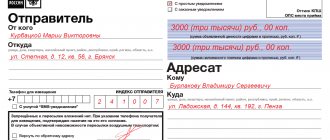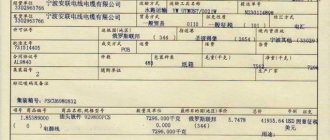Quite a lot of people today are engaged in selling various types of wood. These can be both organizations and individual entrepreneurs. This activity requires regular transportation, which in our country has clear regulations. Transportation of wood raw materials by any type of transport requires a whole package of documents. This necessarily includes transport invoices, delivery notes, certificates, etc. Mandatory papers also include the accompanying document for the transportation of wood.
Preparation of accompanying documents for timber transportation.
Legislative justification
In 2014, the Government of the Russian Federation adopted Resolution No. 571, which establishes the norms and rules for filling out. A unified form of an accompanying document for timber transportation was also presented here. The owner of the product must fill out this form. In the event that the buyer receives ownership right at the time of loading, then the buyer will also have to fill out the form. If the purchase is made from the moment the raw materials are unloaded at the place of final delivery, then the accompanying documents for the transportation of wood are filled out by the seller himself.
It should be noted that when transporting any types of wood materials not mentioned in the list given in Decree of the Government of the Russian Federation No. 1047-r, the accompanying form does not need to be presented during inspection. It is not needed when transporting raw materials for personal purposes.
What information needs to be transferred to the system
First of all, participants in a timber purchase and sale transaction are required to register in the LesEGAIS system. Once registered, suppliers and buyers must enter information about each transaction into the system. To do this, you must fill out the declaration electronically and sign it with an electronic signature.
Order an electronic signature for transferring information to LesEGAIS
The form of the declaration and the rules for its submission are approved by Decree of the Government of the Russian Federation dated 01/06/15 No. 11. The declaration must be submitted within five working days from the date of conclusion, amendment or termination of the contract, but no later than one day before the transportation of wood (Article 50.5 of the Forest Code).
Changes regarding the actual volume of wood transportation must be made to previously submitted declarations. Changes are made during the validity of the agreement on the basis of which the declaration was drawn up, but at least once a month. This requirement is enshrined in Part 3 of Article 50.5 of the Forest Code.
Responsibility for violating the rules for transporting wood
Employees of the State Traffic Inspectorate, Rosleskhoz or other regulatory authorities can request all the necessary documents to check the legality of the transportation being carried out. It is known that checking the entire package of papers is usually carried out with particular passion; any inaccuracy in filling out is interpreted as unreliable information and can entail a rather large fine. The penalties imposed in such a situation are prescribed in Article 8.28.1 of the Code of Administrative Offenses of the Russian Federation. Thus, transportation of wood without accompanying documents or in the presence of violations in their registration provides for the following types of administrative punishment:
- for legal entities (organizations), the amount of the fine can range from 500,000 to 700,000 rubles;
- For individual entrepreneurs and officials, the fine is slightly lower - from 30 to 50 thousand rubles.
In addition to penalties, inspectors have every right to confiscate both the goods being transported and even the vehicle used for transportation. Confiscation will be carried out without fail if the form filled out in the prescribed manner is missing. The inspector may suspect illegal transportation of wood, logging, or even theft. The owner will need to prove in court the legality of the seized property. When an offense of this kind is recorded, court cases will be considered by the magistrate at the place where the car was detained. In this case, it is absolutely unimportant where the goods were transported from and to. This procedure can take a very long time, and this is extremely undesirable for any business.
Cover letter: example
Each organization and employee can decide for themselves what to write in a cover letter, since current legislation does not establish any unified form. However, certain recommendations for the preparation of documentation can be found in GOST R 6.30-2003 (composition of details and their location, requirements for organization forms and much more).
Based on business customs, the cover letter form should contain the following sections:
- "A cap". Here you should indicate the details of the sending company, full name of the addressee, date, outgoing number and a brief content of the letter.
- This is followed by the title and an official address to the addressee by name and patronymic.
- Main part. It can be divided into two parts: a message about the direction of materials and instructions for handling them.
- List of applications. This is the most important section - after all, the attached documents are the purpose and semantic center of the appeal. If there are several of them, then each must be assigned a serial number, indicate the full name, as well as the number of sheets.
- Signature of an authorized person.
Related material: How to write a cover letter for a commercial proposal
In accordance with the general procedure provided for by GOST 6.30-2003 and the Methodological Recommendations of the Federal Archive, an official message must be issued on company letterhead, indicating the registration number and certifying it with a seal. Each organization needs to develop a template - how to write a cover letter - so that outgoing documentation is always executed in a uniform form.
Material on the topic : How to correctly write a cover letter for documents
Document structure
This legally approved document has a strictly defined form, consisting of 12 points. Each of these items is required to be completed. Here it is strictly forbidden to edit the names of subparagraphs or questions that they contain. When filling out the accompanying document for the transportation of wood, the completed form must necessarily indicate:
- Document number, which is established by the owner of the cargo. It is noteworthy that, having several sending points, the owner is not obliged to synchronize the numbers.
- Date of completion.
- Personal data of the owner of transported wood raw materials - organizational and legal form, for a legal entity - name, for individual entrepreneurs - full name, tax identification number, location.
- Carrier details.
- Shipper details.
- Consignee details.
- Numbers of declarations for registration of transactions with timber (this item must be completed if such transactions have been completed previously).
- Number of the vehicle used for transportation.
- The point from which the cargo is sent.
- The point where the product is to be delivered.
- Here you need to fill out a table in which you need to indicate information about the type or species of wood raw materials, its range, volume and quantity. In this table, it will be necessary to note all the differences in the transported wood products, displaying them in different rows and columns.
- This paragraph is intended for certification of the form by the person filling it out. To do this, you will need to indicate the full name of the person filling out, his position and sign.
If necessary, the accompanying document form can always be downloaded on the Internet and copied.
Who should submit information to LesEGAIS
According to Part 1 of Article 50.5 of the Forest Code, organizations and individual entrepreneurs conducting transactions with wood must transfer data to the unified state information system for recording wood and transactions with it (LesEGAIS).
Transactions mean the purchase and sale of wood, including its import and export. Submit a VAT return online with documents confirming export Submit for free
This obligation does not apply to any types of wood, but only to those included in a special list (approved by Government Decree No. 1047-r dated June 13, 2014). It includes logs, pulpwood, firewood, as well as lumber, sleepers, poles and beams.
The LesEGAIS website contains explanations as to which types of wood products are included in the list. In particular, it is said that lumber includes boards with a thickness of up to 100 mm and a width of more than double the thickness.
The types of products that are still not included in the list are also named here. These are profiled lumber, particle boards, wooden containers, etc. There is no need to enter information about the purchase and sale of these products into LesEGAIS.
Non-standard situations
Sometimes a situation arises when, in addition to unprocessed wood products, another product is transported by vehicle, and it can be unloaded at a completely different destination. In this case, the accompanying document does not require any changes. If different consignments of wood are transported by car, which need to be unloaded in different places, then the owner will need to fill out several forms for each consignment of goods separately.
Special situations in cargo transportation
Various unplanned situations also occur in cargo transportation. For example, when a car goes along a route and must unload not in one place, but in several. In this case, you need to foresee all the nuances in advance and calculate the risks:
- If transport is delayed or unloads other cargo in the middle of the route, then additional paperwork is not required. The document indicates only the point of arrival of the cargo.
- If part of the wood cargo will be shipped in the middle of the journey, then it is better to draw up a document for each part of the cargo separately.
Who does not need to issue an accompanying document?
The option not to fill out this form is legally provided to those individuals who transport only for personal purposes. An important nuance in such a situation is the fact that when passing the inspection, the owner will be required to prove that the purpose of purchasing and transporting wood raw materials is to use it for their own needs. To do this, the owner must have in hand any papers confirming the purchase. These could be cash receipts, a bill of lading, and a sales contract. If the above papers are missing, the inspector will be required to seize both the cargo and the vehicle. Further proceedings will take place in court. So it’s worth considering whether unscrupulous carriers need to take risks in this way.
How information is transmitted
In practice, submission of information to LesEGAIS occurs as follows. Each seller and each buyer fills out a separate electronic declaration for each concluded timber purchase and sale agreement. In this case, the transaction participant indicates the total volume of all supplies that are expected to be made under this agreement. If the exact figure is not known, an approximate value can be provided. When the declaration is ready, the system will assign it a number. Subsequently, it will be needed when filling out a number of documents, for example, the “export” customs declaration.
Then, for each previously submitted declaration, reports are compiled and submitted to LesEGAIS at least once a month from the moment of its submission. They indicate the actual volumes of wood sold or purchased under the agreement under which the declaration was drawn up. This data is taken from the primary documents for shipment: invoices, specifications, etc. Please note that the current report should include the amount of timber purchased or sold since the last report. In other words, the indicators of the current report do not need to be added to the indicators of the previous report, since the system will do this itself.
Thus, both sellers and buyers prepare declarations and reports. This means that each contract and the volume of supplies under it is recorded in the system twice: first time by the seller, second time by the buyer.
Obtain information about government contracts concluded by the supplier
How often do you need to fill out this form?
The legislation provides for filling out an accompanying document for each batch of wood. There is only one option that can be considered an exception. In the event that the purchased goods are transported within one day in absolutely identical batches, on the same vehicle, from the same place, the unloading point is also the same, it is intended for the same buyer, then this form can be used apply only once. But if there are even the slightest differences in the batches, the form is filled out again. From all of the above, we can conclude that before you begin transporting any type of wood in its unprocessed form, you need to familiarize yourself with the standards governing this activity. Careful attention to the legislation will prevent you from losing a fairly large amount of money, time and nerves.
Why compose it?
Such an appeal is attached to the submitted documents, commercial proposals or resumes. Since its preparation is not an imperative requirement of legislation, the form of the message is arbitrary. Such a form allows you to streamline paperwork as much as possible and is essential for the sender, since it contains the following information:
- departure date. If necessary, this will serve as evidence that the materials were sent on time;
- list of documents. It will allow you to prove that the recipient has them;
- registration number (assigned upon receipt). Will give you the opportunity to control deadlines.
If the last point is of fundamental importance to you, then it is recommended to send the documentation by registered mail - this will guarantee delivery and confirm receipt (which is necessary, for example, when exchanging materials between the parties to legal proceedings).
Material on the topic : Writing a cover letter for the reconciliation report
We transport the timber to the sawmill
The rules and requirements for organizing the transportation of wood, presented in the latest edition of the Forestry Code of the Russian Federation (Article 50.4), are mandatory for all types of wood transported within the Russian Federation. The location of the felling - in the forest itself or outside it - does not affect the need for their execution.
It doesn’t matter what the grounds for transportation are: it could be a contract of carriage, transportation of your own wood, etc. The main thing is to have an accompanying document when transporting cargo by any type of transport (truck, train or ship).
As for skidding - that is, transporting felled trees, etc. from the place where logging work was carried out to special timber loading points - in this case there is no need to draw up an accompanying document. As, in fact, when moving cargo in warehouse and in-plant areas, including if such a place is a sawmill.









